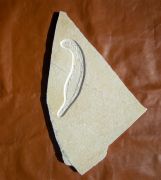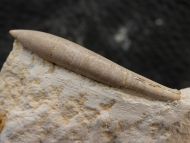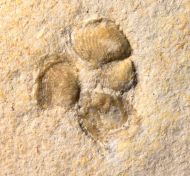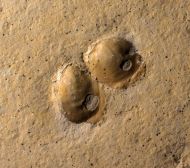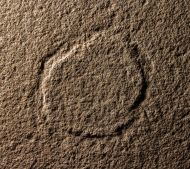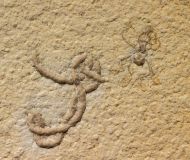Fossils for sale
Other Jurassic fossils from Solnhofen and Eichstäät .

Other Fossils - Diversity in the Solnhofen Limestone
The Solnhofen limestones are renowned for their extraordinary diversity of species. To date, more than 700 different species have been described, and new ones continue to be added. In addition to the well-known vertebrates such as fishes, pterosaurs, and Archaeopteryx, numerous plant remains (e.g., conifer twigs, ferns, seed plants) and a wide variety of invertebrates are also found:
- Mollusks: bivalves, gastropods, cephalopods, ammonites
- Jellyfish: often with astonishingly detailed soft-tissue preservation
- Worms: polychaetes and others
This diversity makes Solnhofen a unique window into the ecosystems of the Late Jurassic.
Benthos – Life on the Lagoon Floor
The lagoon floor was usually inhospitable: oxygen-poor, hyposaline, and covered with fine lime mud. This explains the exceptionally good preservation of many fossils. Scavengers were largely absent, and decay was strongly limited.
- Nevertheless, benthic and sessile organisms are preserved, such as crinoids, bivalves, or small gastropods.
- Some of these fossils entered the lagoons as drift material, sometimes on so-called “rafts” of plant debris, or were transported by currents.
- Particularly fascinating are trace fossils (ichnofossils): they record movements, feeding traces, or even the death throes of animals on the lagoon floor. In some cases, the trace maker itself is preserved at the end of the track – a virtually unique phenomenon worldwide.
Unique Significance
The combination of exceptional preservation, high diversity, and ecological completeness makes the Solnhofen limestones one of the most important fossil sites in the world.
- They document not only marine life but also the transition to terrestrial habitats (through plants, insects, and terrestrial vertebrates).
- The diversity ranges from microscopic organisms to large pterosaurs.
- Thus, the Solnhofen limestones represent a globally unique archive of the Jurassic, invaluable both scientifically and culturally.
References (Selection)
- Barthel, K.W., Swinburne, N.H.M. & Conway Morris, S. (1990): Solnhofen. A Study in Mesozoic Palaeontology. Cambridge University Press.
- Röper, M. (2005): Solnhofen – Fenster in die Jurazeit. Quelle & Meyer, Wiebelsheim.
- Arratia, G. & Tischlinger, H. (2010): The Solnhofen (Late Jurassic, Germany) actinopterygian fish fauna revisited. Zitteliana B 30: 67–95.
- Lomax, D.R. et al. (2017): An 8.5 m long ammonite drag mark from the Upper Jurassic Solnhofen Lithographic Limestones, Germany. PLoS ONE 12(5): e0175426.
- Wellnhofer, P. (2009): Solnhofen – Ein Fenster in die Jurazeit. Pfeil Verlag, Munich.
- Wellnhofer, P. (2008): Archaeopteryx – Der Urvogel von Solnhofen. Pfeil Verlag, Munich.
